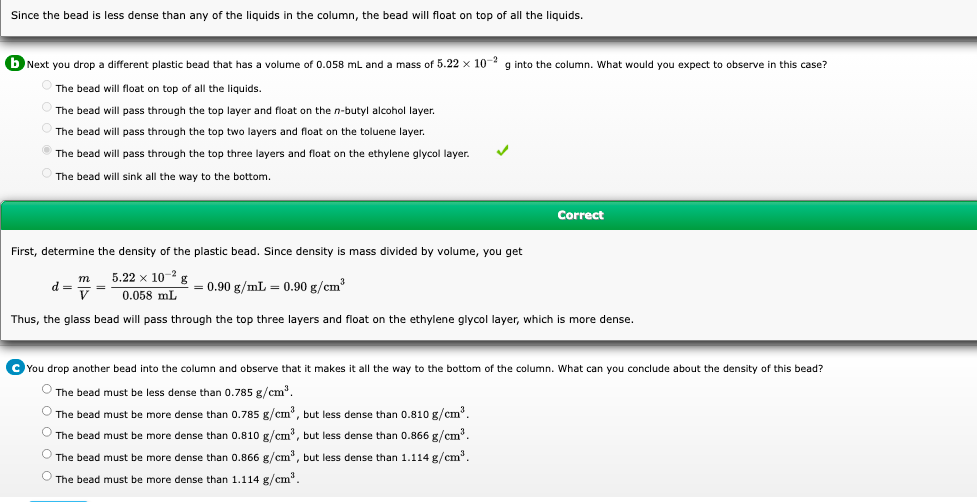You drop another bead into the column and observe that it makes it all the way to the bottom of the column. What can you conclude about the density of this bead? The bead must be less dense than 0.785 g/cm". The bead must be more dense than 0.785 g/cm³, but less dense than 0.810 g/cm". The bead must be more dense than 0.810 g/cm', but less dense than 0.866 g/cm. The bead must be more dense than 0.866 g/cm", but less dense than 1.114 g/cm". The bead must be more dense than 1.114 g/cm".
States of Matter
The substance that constitutes everything in the universe is known as matter. Matter comprises atoms which in turn are composed of electrons, protons, and neutrons. Different atoms combine together to give rise to molecules that act as a foundation for all kinds of substances. There are five states of matter based on their energies of attraction, namely solid, liquid, gases, plasma, and BEC (Bose-Einstein condensates).
Chemical Reactions and Equations
When a chemical species is transformed into another chemical species it is said to have undergone a chemical reaction. It consists of breaking existing bonds and forming new bonds by changing the position of electrons. These reactions are best explained using a chemical equation.

Trending now
This is a popular solution!
Step by step
Solved in 2 steps









